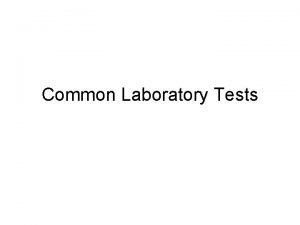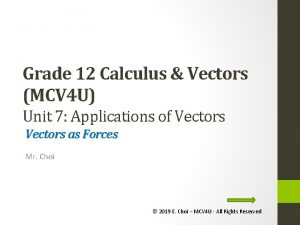MCV 4 U Calculus and Vectors Unit 1





- Slides: 5

MCV 4 U Calculus and Vectors Unit 1 Introduction to Calculus and derivatives Lesson 1

Take Home Message 1. 2. 3. The symbol √ is called a radical sign. The expression within the radical sign is called a radicand. In this case, the radicand is 32. The number 5 is called the index. An index of 5 means that we are looking for the fifth root.

Take Home Message • If the index n is even, the radicand a must be non-negative for the root to be a real number. • nth root of a perfect nth power will completely simplify to a non-radical expression. • If the radicand is not a perfect power, then you can simplify the part which is a perfect power and leave the rest within the radical.

Take Home Message • Rationalizing the Denominator o If the denominator is a single term involving a radical, multiply both top and bottom of the fraction by the radical expression. o If the denominator has two terms, you must multiply both the top and bottom of the fraction by the conjugate. And if you had a – √b to begin with, its conjugate would be a + √b.

Take Home Message • Rate of Change: A rate of change is a rate that describes how one quantity changes in relation to another quantity. If x is the independent variable and y is the dependent variable, then Positive Rate of Change When the value of x increases, the value of y decreases and the graph slants downward. Negative Rate of Change When the value of x increases, the value of y decreases and the graph slants downward. Zero Rate of Change When the value of x increases, the value of y remains constant and the graph is a horizontal line.









